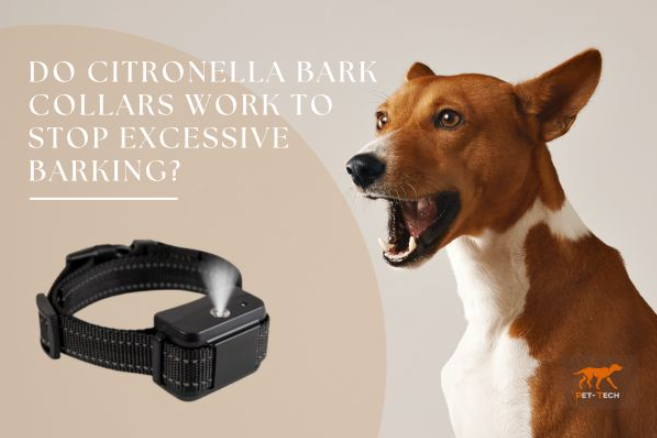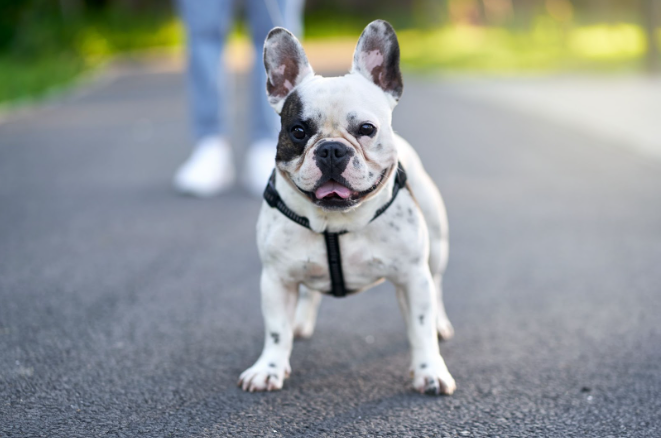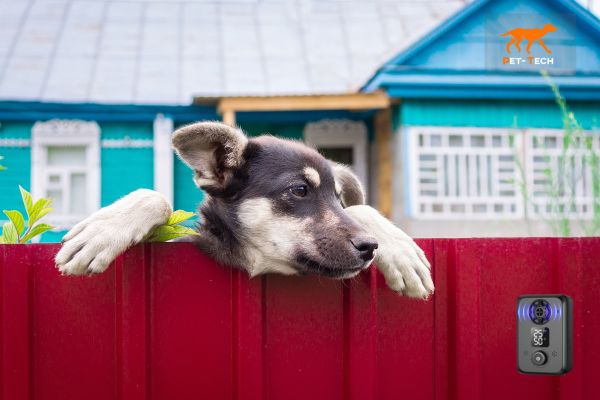As Aussies, we’re a dog-loving nation and we’ve got big hearts for big dogs.
Breeds of large dogs, such as the German Shepherd, Labradors, Rottweilers, and Dobermans round out the list for top Australian Large Dog breeds. Even the largest dog breed in Australia; the Great Dame is a surprisingly popular choice. All of these gentle giants are well known for their loyalty, intelligence, and protective nature.
Whilst these Australian large dog breeds make excellent companions, they also come with some unique challenges. With a large dog, comes large responsibility as you won’t be able to physically remove or control them around situations like smaller dogs.
Australian large dog breeds can be prone to excessive barking due to their protective instincts, high energy levels, and strong bonds with their families. The bark sound from large dogs also travels further, making it more tiresome for neighbours.
If your dog’s barking is becoming excessive, telling them to ‘knock it off’ without any proper training, is ineffective. To reduce excessive barking and follow other commands, experienced Australian large dog breed owners and professional dog trainers prefer to introduce bark collars as part of a large dog’s training routine. While some pet owners may be hesitant about using bark collars, when used correctly, they can be an effective and humane way to train your dog and reduce unnecessary barking.
Training Tips for Managing Barking in Australian Large Dog Breeds
Training your Australian large dog breed to manage their barking requires patience, consistency, and understanding. Here are some essential training tips to help you on your journey:
Identify Triggers
The first step in managing your dog’s barking is to observe their body language and identify the triggers that cause the behaviour. Isolating and reducing triggers (like stray animals and weather events) can only go so far.
Desensitisation is a more effective way to fix dog behaviour. For example, if your dog acts up when regular guests arrive, try gradually exposing them to regular guests—if they are comfortable—whilst rewarding them for good, calm behaviour. With the correct reinforcement, the dog will learn how to behave appropriately around a trigger.
Consistency in Commands
Consistency is key when training any dog, especially with big dogs breeds as you may not be able to physically remove them from situations. Use the same commands and rewards during training. For example, if you want your dog to stop barking, use a command like “quiet” or “enough” consistently. Reinforce this behaviour with positive rewards, such as treats or praise, when your dog calms down. Reward your dog immediately after they complete a desired behaviour to help them associate the response.
Exercise and Stimulation
Big dogs, have Big Dog Energy! If your dog is destroying things or barking for attention while you are away at work, it may be a sign your dog is not getting enough exercise and mental stimulation. Big dog species need regular physical activity, such as walks, runs, or playtime, to burn off excess energy.
Providing your dog with puzzle toys, training sessions, and dog socialisation can keep them occupied and reduce the likelihood of barking out of boredom.

Benefits of Using Bark Collars for Australian Large Dog Breeds
Even if you think you have the one of the biggest dogs in Australia, chances are there’s a bark collar big enough to tame your furry friend. Bark collars can be a valuable tool in managing barking behaviour when used correctly, as they strengthen the conditioning response.
Effective Training Tool
Bark collars can provide immediate feedback to your dog, helping them understand that barking is not acceptable in certain situations. This can be particularly useful for large breeds, which may not always respond to verbal commands alone. When combined with positive reinforcement, bark collars can be an effective way to reduce excessive barking.
Types of Bark Collars
For Australian large dog breeds, There are several types of bark collars available, each with its unique features:
- Static Collars: These collars deliver a mild static pulse or vibration when your dog barks. The sensation is similar to a gentle tap on the shoulder and is designed to interrupt the barking.
- Remote Training Collars: These collars allow you to manually deliver a mild static correction or vibration from a remote control, helping you train your dog to stop barking at your command.
- Citronella Collars: These collars spray a burst of citronella when your dog barks. Dogs typically find the smell unpleasant, which helps discourage barking.
- Boundary Collars: If you have a hairy houdini, boundary collars are an effective way to demonstrate to your dog to stay within the boundaries of your property and resist the curiosity of the outside world.
All of these types of collars can effectively help reduce your dog's excessive barking. What kind of collar you think is best for your furry friend is up to you.
Safety and Comfort
All these types of collars are safe and humane for Australian large dog breeds. Look for collars with adjustable settings so you can control the intensity of the correction, start the collar on the lowest setting and gradually raise it until you find one that grabs your dog’s attention.
Due to their size, Australian large dog breeds may need the collar on a higher setting than smaller breeds.
Proper Use of Bark Collars: Best Practices
To ensure the bark collar is effective and comfortable for your dog, follow these best practices:
Correct Fit and Adjustment
A properly fitted bark collar is snug but not too tight, and the sensors or prongs make proper contact with your dog’s skin. Always check the fit regularly to prevent chafing or discomfort. Larger dogs require collars between 40cm and 60cm in length.
Gradual Introduction
Introduce the bark collar gradually to your dog. Allow them to wear the collar without activation for short periods, so they become accustomed to it. Gradually increase the time your dog wears the collar, ensuring they have a positive experience.
Monitoring and Supervision
Always monitor your dog’s response to an active bark collar. If your dog shows signs of distress or discomfort, discontinue use and consult with a professional trainer or veterinarian. Supervision is essential to ensure the collar is used effectively and humanely. Additionally, e-collars should not be worn for more than 12 hours per day to prevent skin irritation and ensure your dog’s comfort.
One important thing to remember: Before using a bark collar, it’s essential to check the legislation in your state, as there are different rules regarding the use of these collars in Australia. Some states have restrictions on certain types of bark collars, so make sure you comply with local regulations.
Choosing the Right Bark Collar from Pet-Tech
Pet-Tech offers a large range of bark collars that kinds of big dogs prefer. Some recommended products include:
- For the biggest dog breed in Australia, the Pet-Tech B630+ Intelligent Bark Collar is up to 77 cm long.
- 2-in-1 Bark and Remote Training Collar, 1-3 dogs makes multiple dog training easy and has options to simultaneously train up to three of your dogs, regardless of their size!
It's important to remember that bark collars should be used as part of a comprehensive training program that includes positive reinforcement and consistent commands.
By choosing the right bark collar from Pet-Tech, you can effectively manage your dog’s barking behaviour while ensuring their comfort and safety.




